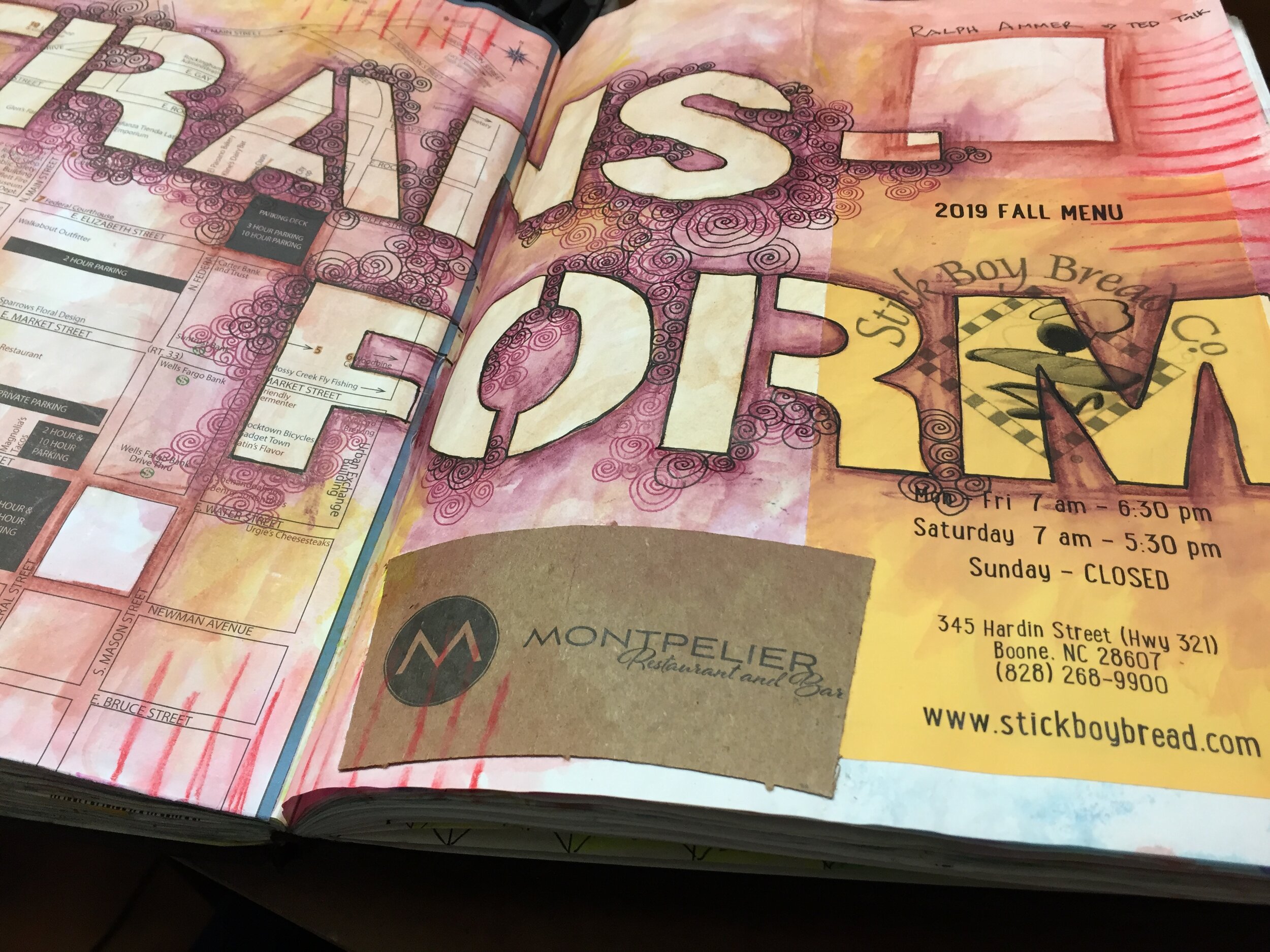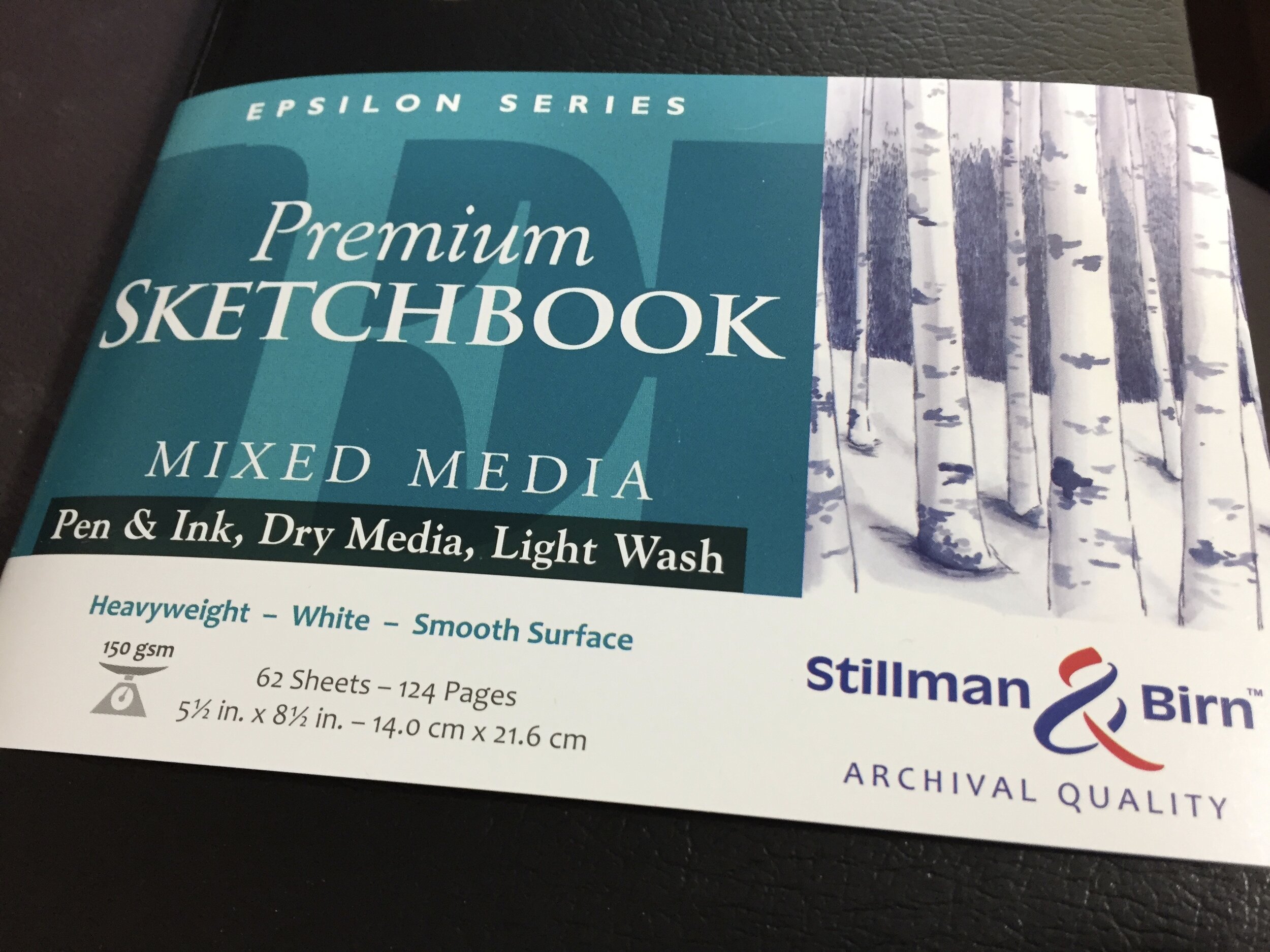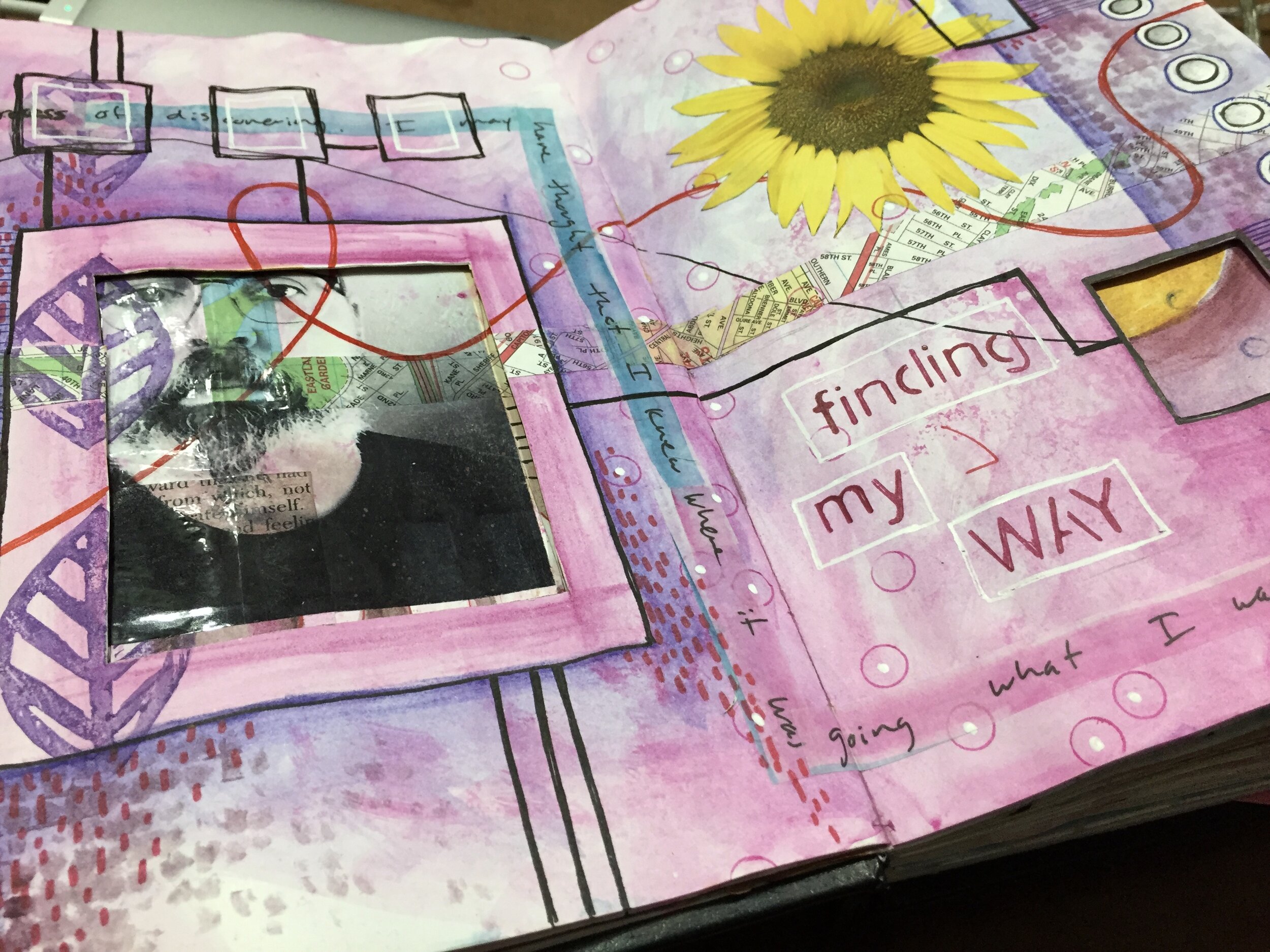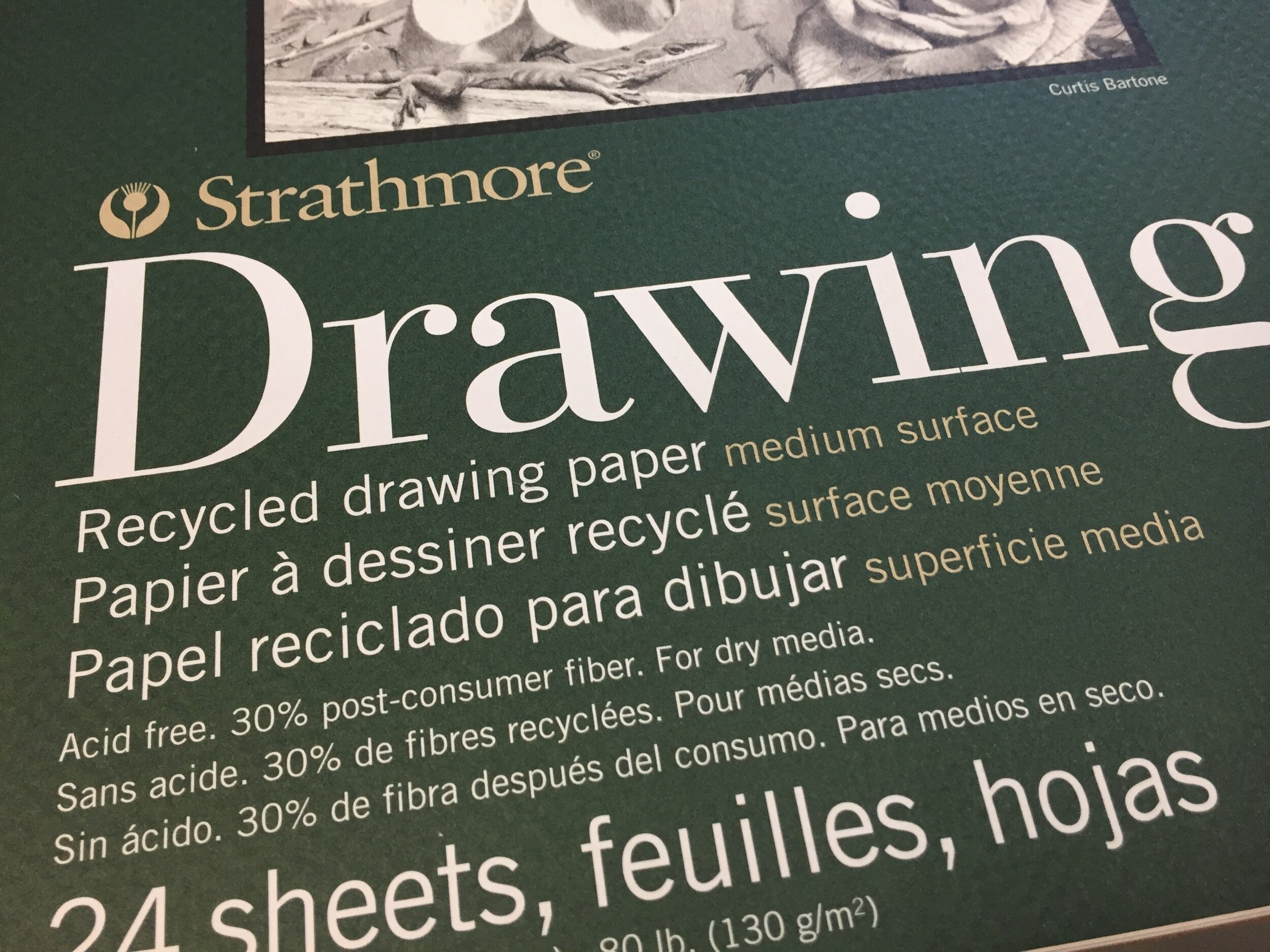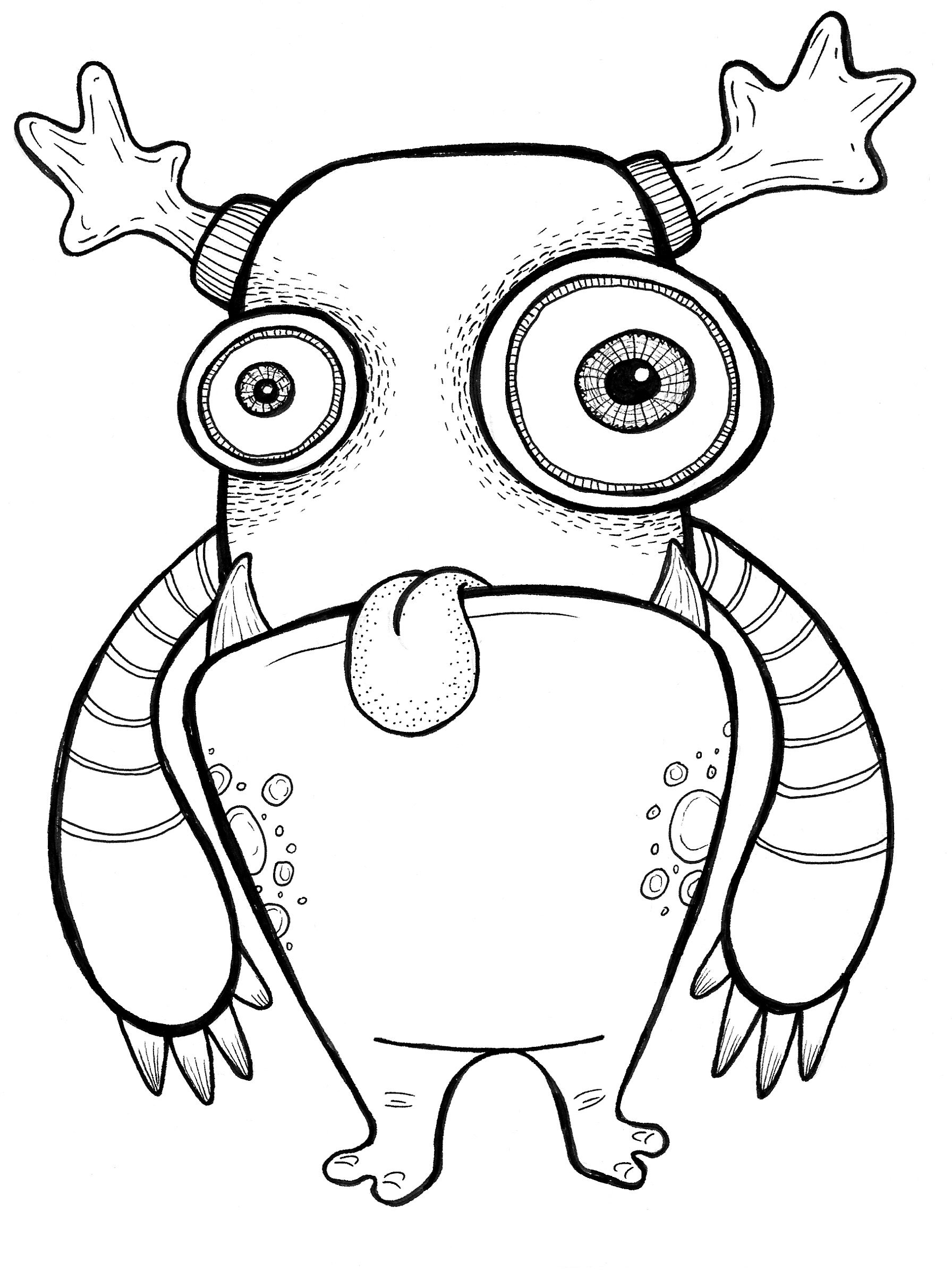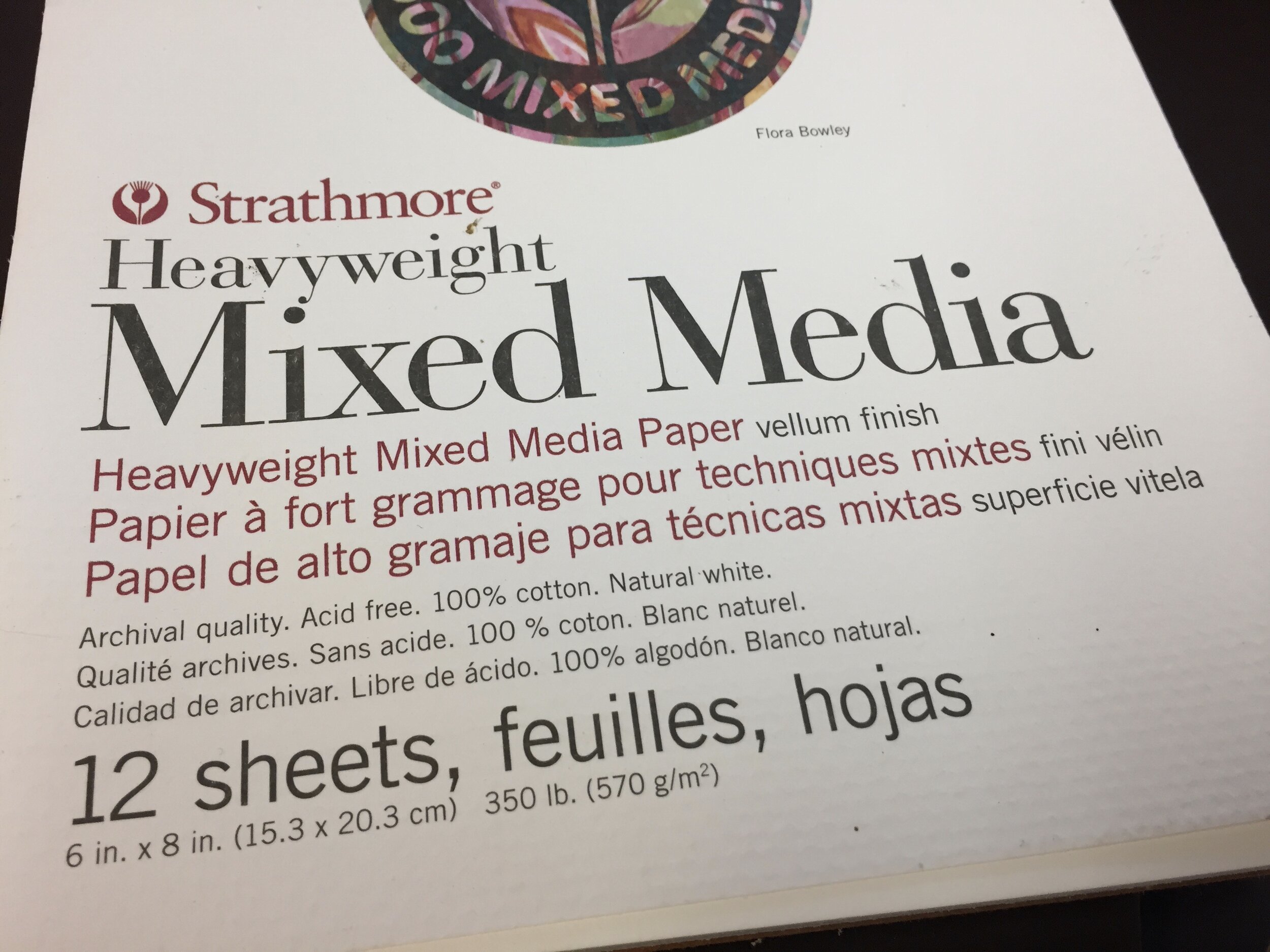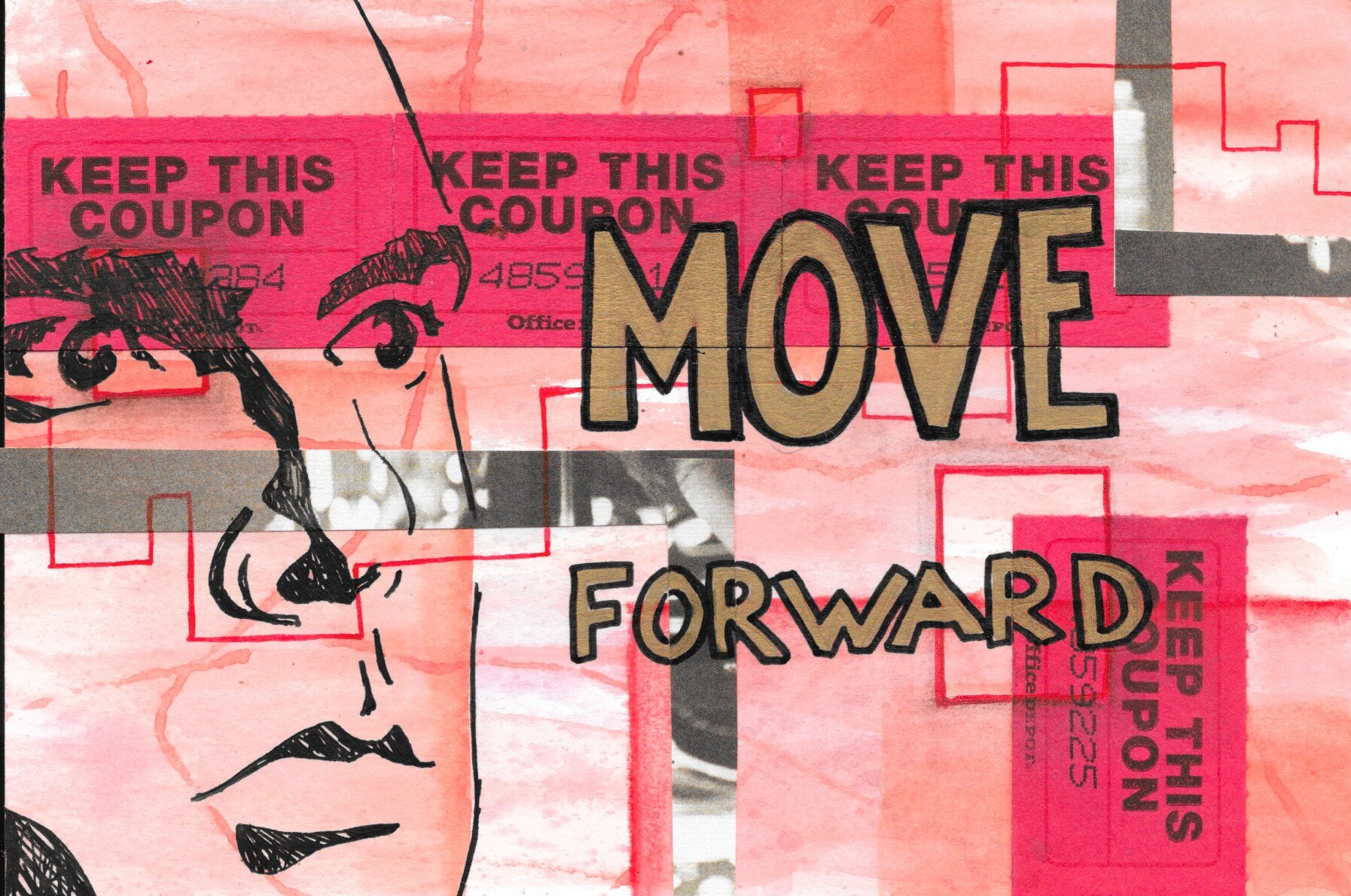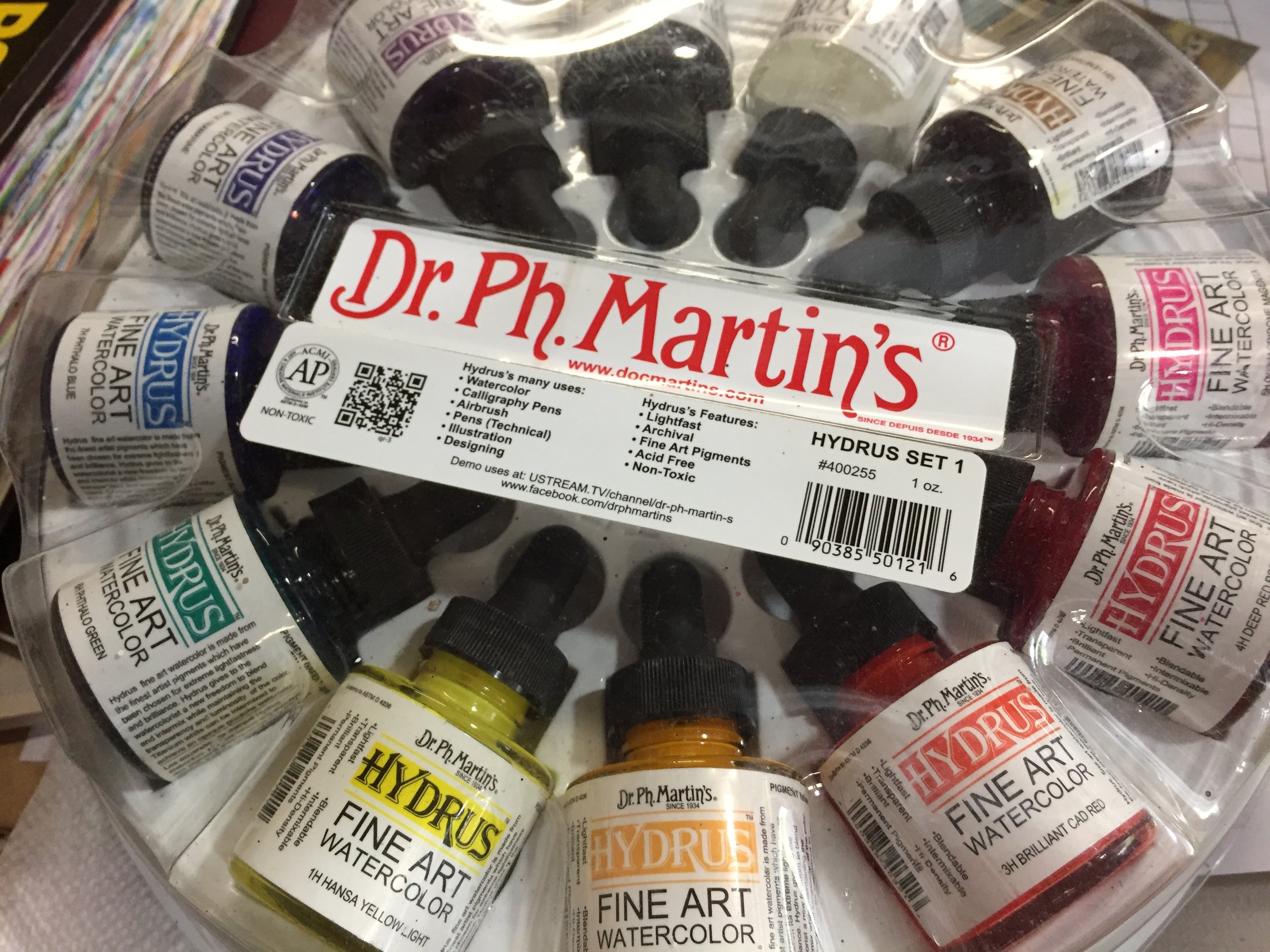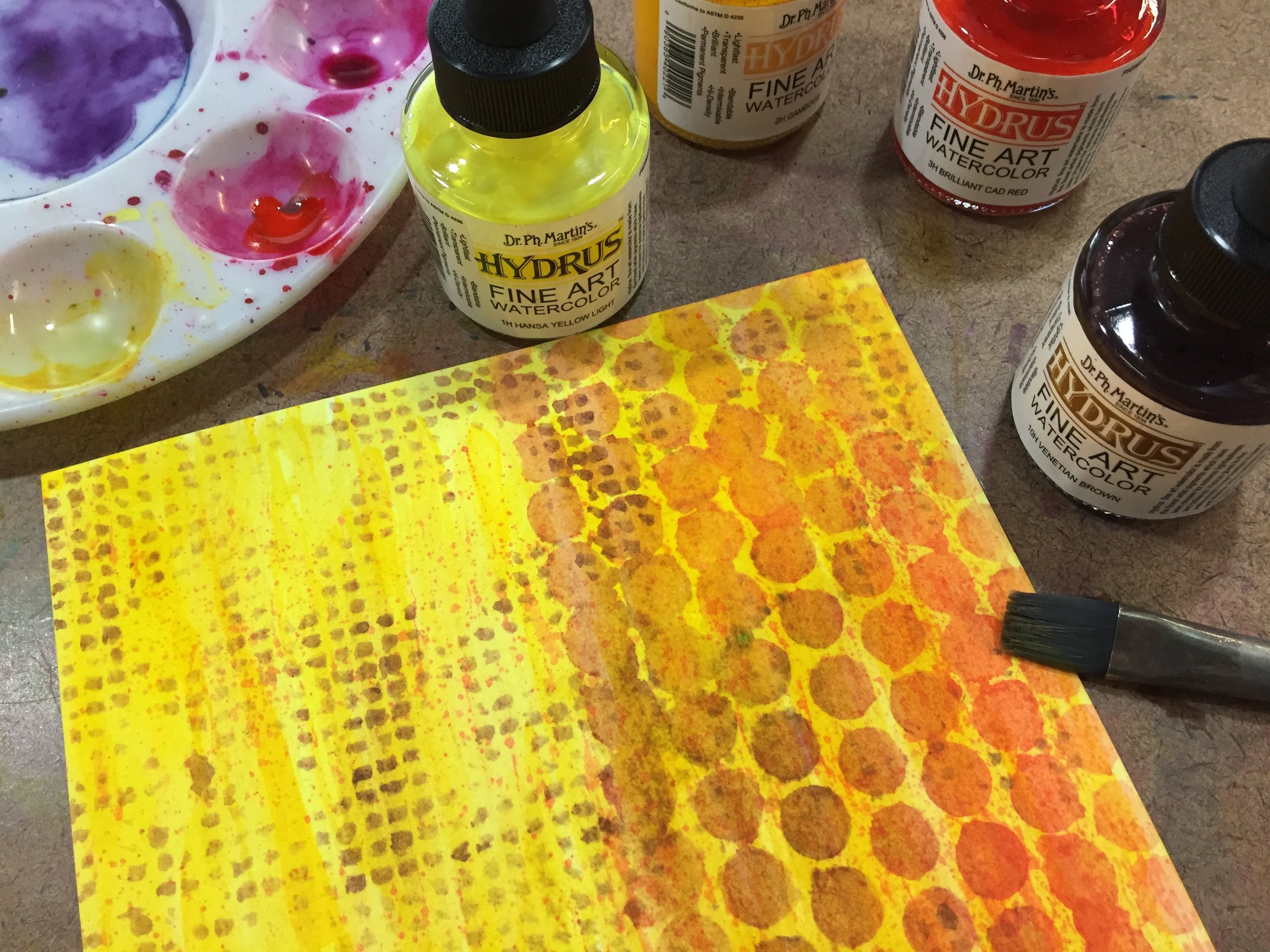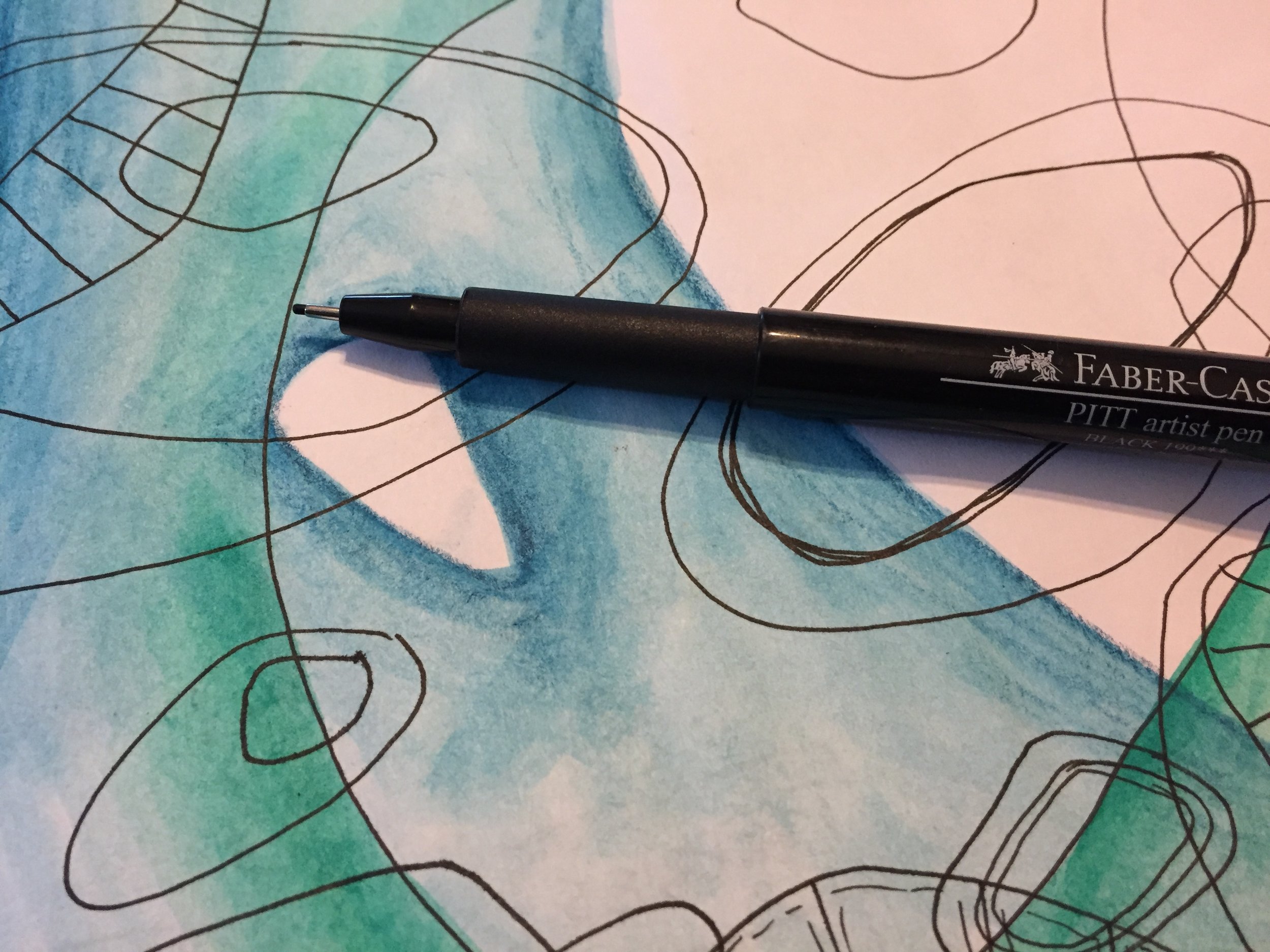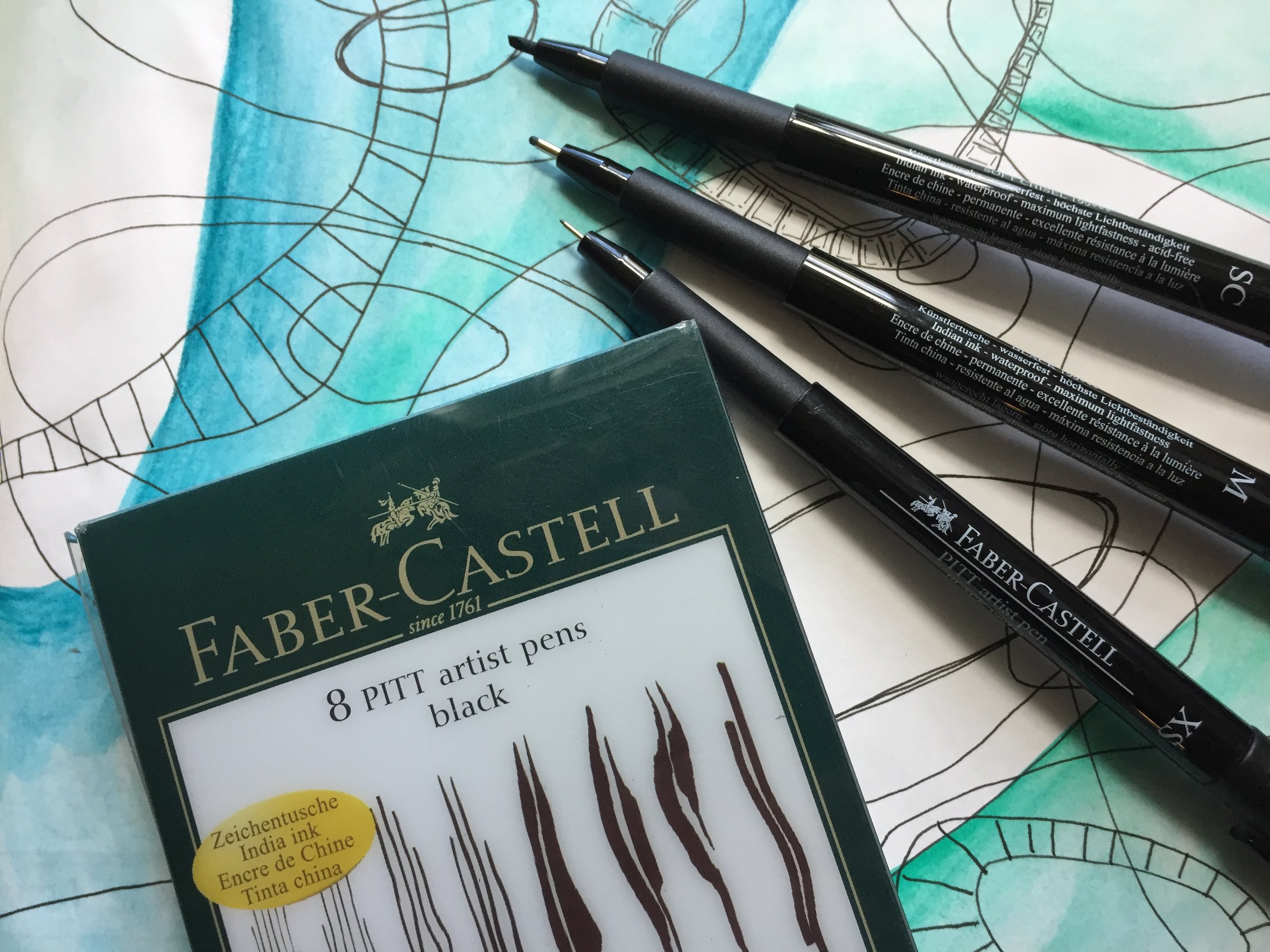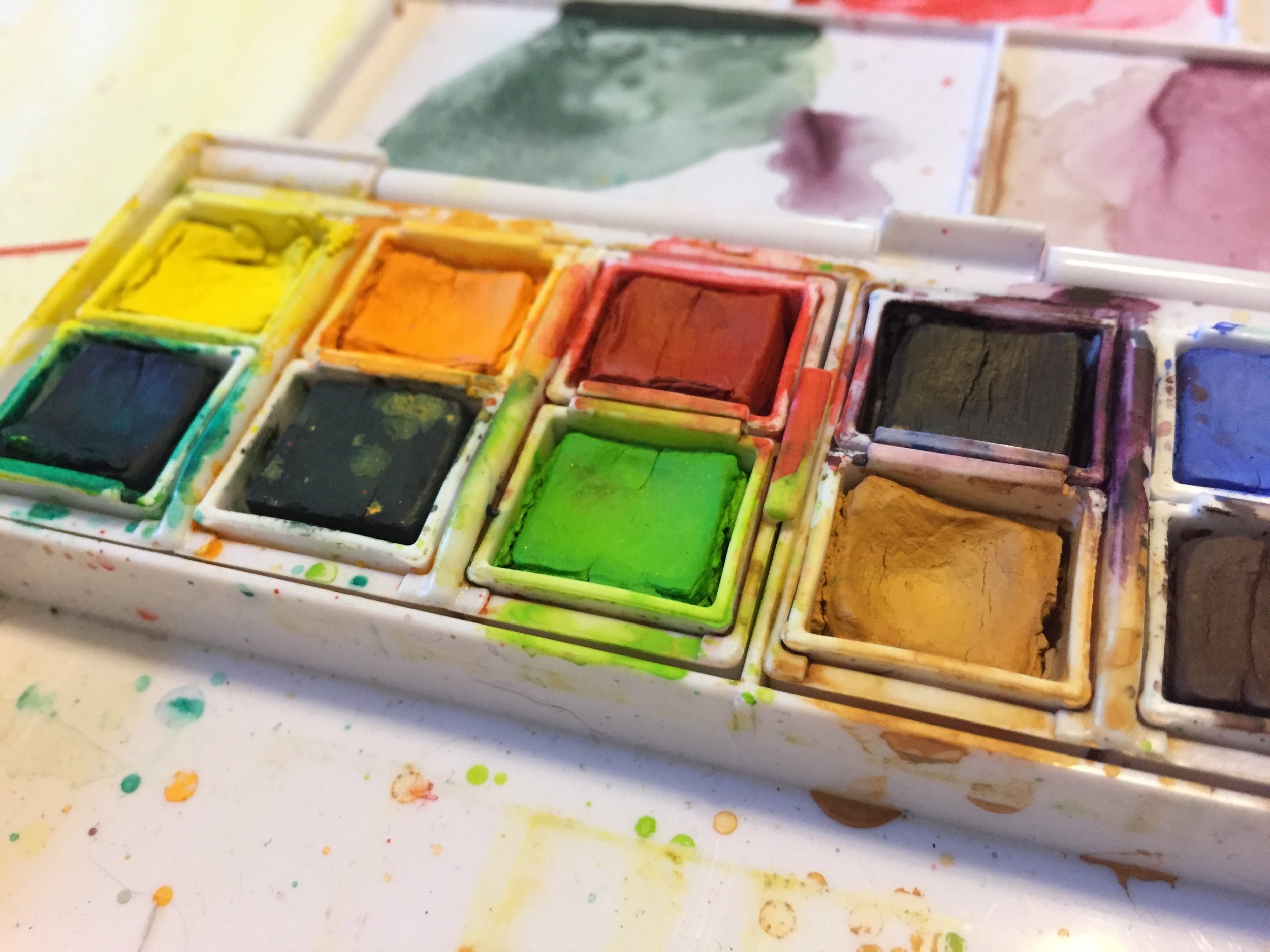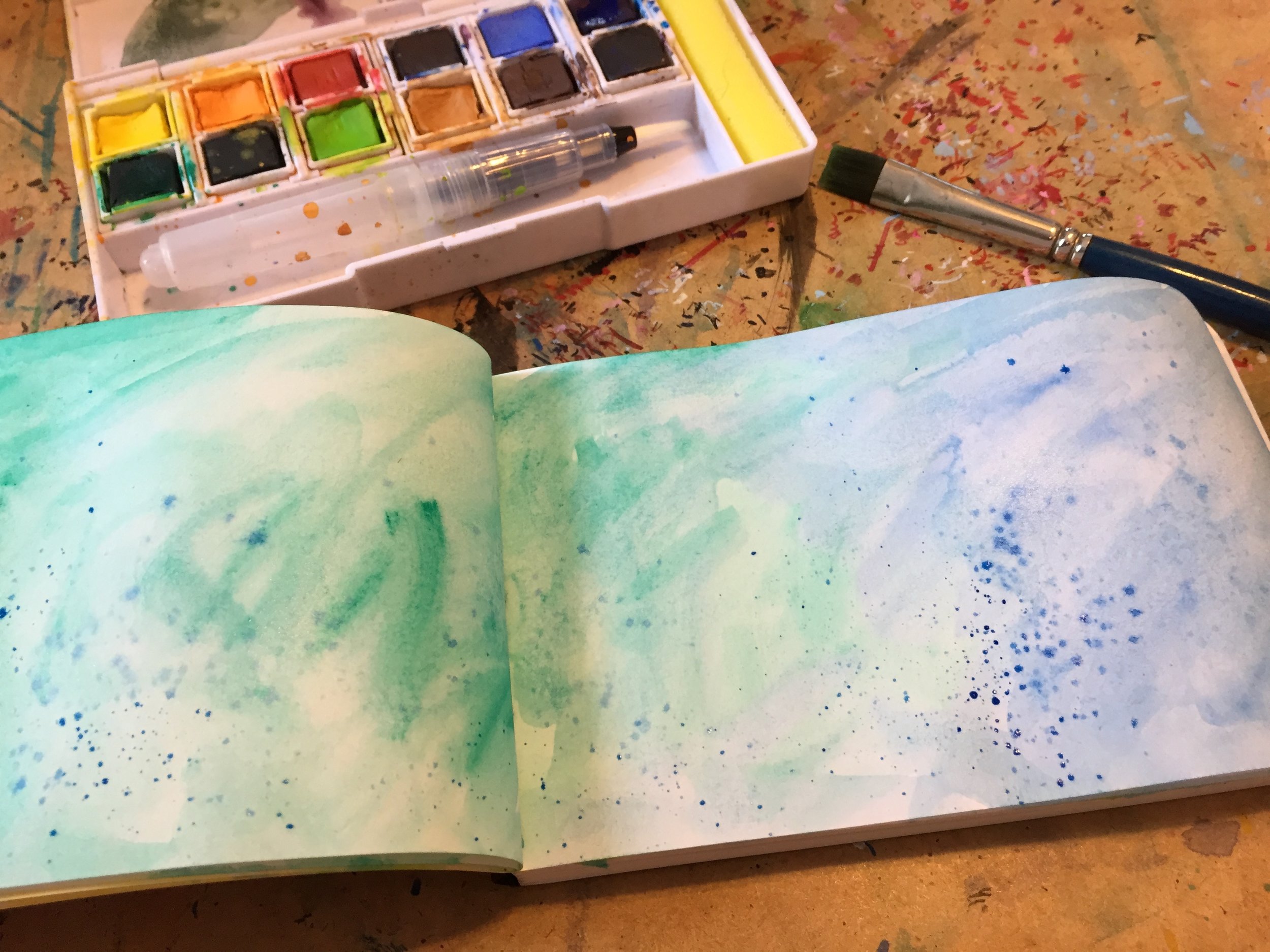What sketchbook do you use? That’s probably the number one question that I get asked, so I thought that I’d tackle that question and expand it into a discussion about paper since the reason that so many people ask about the book is that they want to know about the paper that’s inside of it.
Here are a few of those things to consider the next time you go to choose paper or a book.
Paper Characteristics
Probably the first thing to think about with paper is the weight since it determines the thickness. Thin papers tend to buckle and bleed more than thicker papers, and anyone who wants their work to be flat, will probably want a thicker paper that can stand up to wet materials. You can get a general sense of a paper’s weight and thickness just by it’s type. Sketch paper tends to be rather thin, drawing paper is a little thicker, and mixed media and watercolor papers tend to be thicker and can handle wet materials with little buckling and bleeding. But even among the same type of paper, there are various weights that might get a bit confusing. Paper is usually marked in pounds (lbs.) here in the US, and that number comes from weighing 500 sheets of a certain paper at a certain size, but sometimes different sizes of paper are used. That means that two different papers can be marked as 90lbs. and one might be thicker then the other. Kind of odd, but look closely at paper, and you’ll see examples of this. It’s more accurate to look at the grams per square meter (gsm, or g/m2). So a 150gsm paper will be thinner than a 190gsm paper.
The next thing is to think about might be the surface texture of the paper, watercolor paper tends to have the most texture of the papers I’ve mentioned, and is often described as hot pressed and cold pressed with hot pressed being smoother than cold pressed. But hot pressed paper still has a slight texture which doesn’t make it ideal for mixed media — great for wet media like watercolor or painted ink, but not so great for drawing. Sketch paper and drawing paper are much smoother and are often described as smooth or vellum (slightly textured), but they don’t stand up as well to the wet materials. Then we have mixed media paper, and even mixed media paper can have smooth or vellum surface.
Then there’s the sizing. Sizing is usually a plant-based starch, an animal gelatin, or a synthetic substance that is applied to paper to regulate how the paper absorbs water. That’s why sketch and drawing papers don’t always handle wet materials — not so much because they are thin, but because they do not have the appropriate sizing. You may have had an issue in the past when you’ve painted on a piece of paper or in a sketchbook only to have the paint soak immediately into the paper. That’s the sizing, and it means that you can have a thick drawing paper that isn’t good for wet media, because it isn’t sized like a watercolor or a mixed media paper. The sizing on the watercolor and mixed media papers allows the wet media to sit on the surface longer before soaking in enabling the paint or ink to be pushed around a bit and dry at a slower rate.
Another thing to think about with paper, is what is it made of. You might have thought that all paper was made out of wood pulp, and most paper is. But for many companies the highest quality paper is made from 100% cotton and is often referred to as rag paper, but paper can be made of other materials as well. Yupo paper is 100% polypropylene, so basic plastic, and isn’t absorbent at all, and Yasutomo makes a mineral paper that is 80% calcium carbonate bonded with a small amount of plastic.
There are a lot of considerations when thinking about paper, and I haven’t even mentioned bristol board, pastel papers, newsprint, and so many others. Now that I’ve bored you with all of this paper knowledge, let me share with you what I like to use and why I like it.
Journals
For my large 11x14 inch hardbound everyday journal, I like a Strathmore 400 Series Hardbound Sketch Journal. It has 192 pages of 89gsm sketch paper that holds up pretty well to the wet materials that I use, but there is a lot of buckling and sometimes materials bleed through. It just doesn’t bother me. The pages flatten out pretty well from the book just being closed, and the bleeding isn’t too bad. For my Journal Friday time-lapse videos, I use an 11x14 inch Strathmore 500 Series Hardbound Mixed Media Journal. It has 48 pages of 190gsm paper that is 100% cotton. The thick paper buckles slightly, but not much allowing it to lay fairly flat while filming. It’s a thick paper and doesn’t allow materials to bleed through.
Though Strathmore has been my go to for quite a few years, I have gotten into Stillman and Birn, and I’ve been using some of their 5.5x8.5 inch hardbound sketchbooks lately. I really like their Epsilon Series which has 124 pages of 150gsm white paper with a smooth surface. It can buckle a bit, but it’s a nice paper that flattens pretty well from the book being closed, and it doesn’t bleed through.
So with books, there’s a trade off — the thicker the paper, the fewer pages, but the less buckling and bleed through.
Papers
For drawing, I love the Strathmore 400 Series Recycled Drawing paper. It’s a bright white 130gsm paper that I use for drawing with graphite or ink, but it can stand up to light washes of paint, though it can buckle quite a bit when wet. I only use it with graphite or my drawing pens.
For mixed media work, I love the Strathmore 400 Series Mixed Media paper. This 300gsm paper is great for building layers of wet materials, but it’s smooth surface is also perfect for drawing with graphite or ink. It’s my go to paper for most of my stand alone mixed media work, though it warps a little bit when wet. I can build up layers of watercolor, watercolor pencil, ink, and collage, and it handles acrylic paint, as well. Recently, I’ve tried out Strathmore’s 500 Series Heavyweight Mixed Media paper. This is a 100% cotton paper that is a staggering 570gsm and can stand up to all types of media.
I hope that I haven’t shared too much about paper, but I feel like I’ve covered the basics so that you can go out an pick something that is appropriate for your work. But like anything, try it out, and find what you like best.
I get no compensation for these recommendations, and I simple share the materials and the brands that I like and personally use.

